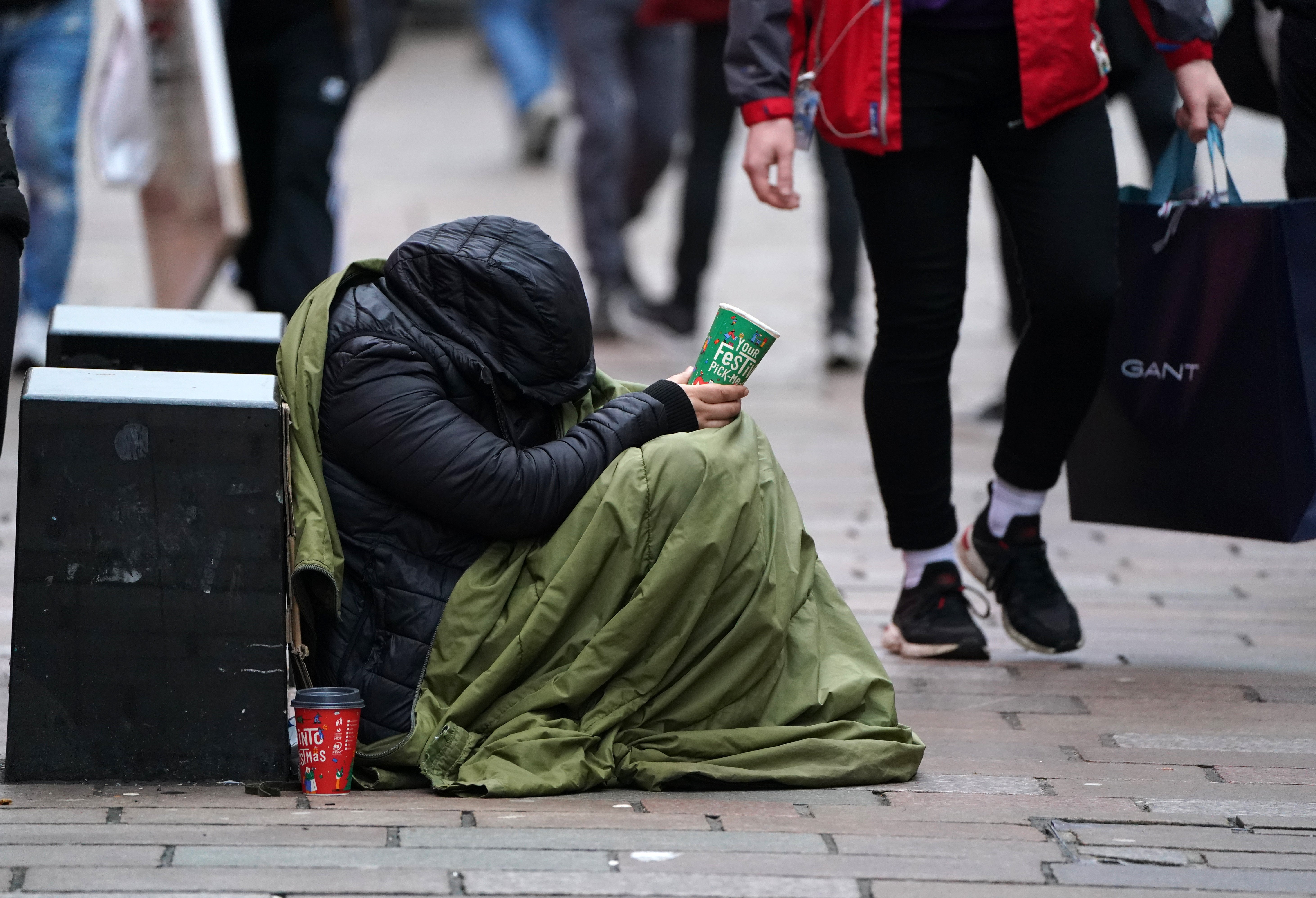Homelessness and rough sleeping on the rise, figures show
Scottish Government data showed that over the six months from April to September 2021, there were 14,161 households assessed as being homeless.

Your support helps us to tell the story
From reproductive rights to climate change to Big Tech, The Independent is on the ground when the story is developing. Whether it's investigating the financials of Elon Musk's pro-Trump PAC or producing our latest documentary, 'The A Word', which shines a light on the American women fighting for reproductive rights, we know how important it is to parse out the facts from the messaging.
At such a critical moment in US history, we need reporters on the ground. Your donation allows us to keep sending journalists to speak to both sides of the story.
The Independent is trusted by Americans across the entire political spectrum. And unlike many other quality news outlets, we choose not to lock Americans out of our reporting and analysis with paywalls. We believe quality journalism should be available to everyone, paid for by those who can afford it.
Your support makes all the difference.There has been an increase in the number of Scots classed as homeless, with official figures showing a rise in both rough sleeping and the number of people in temporary accommodation.
Scottish Government figures showed that over the six months from April to September 2021, there were 14,161 households assessed as being homeless – an increase of 3% from the same period in 2020.
At the end of September 2021, there were 13,192 households living in temporary accommodation, which can include hostels and B&Bs, as well as council and housing association properties.
And while this figure was down by 7% on the total from September 2020, it was up from the total of 13,063 recorded on June 30 2021.
The number of children living in temporary accommodation at the end of September last year stood at 7,510 – with this having increased from 7,365 at the end of June and 7,130 on March 31.
Meanwhile, 4% of all households seeking help had slept rough the night before making an homeless application – with 6% having had to resort to this in the previous three months.
In the three months from July to September, 569 households seeking help had slept rough in the previous three months – up from 509 in April to June.
Housing Secretary, Shona Robison, accepted the number of people in temporary accommodation was “too high”, as she insisted the Scottish Government and other bodies were “working tirelessly” to tackle homelessness.
Her comments came as the Scottish Government report revealed Edinburgh has seen a “notable decline” in people applying to be classed as homeless, with the total falling by 39% to stand at 809.
As a result, it found the capital “now accounts for only 6% of all households assessed as homeless compared to 9% in 2020”.
The report said: “This drop may be due to Edinburgh’s large private rented sector coupled with still lower than pre-pandemic eviction rates, despite eviction bans being lifted.
“This combined with the increased efforts of Edinburgh’s homelessness prevention team are believed to have prevented 180 households being evicted from the private rented sector in this period.”
However, Glasgow has seen a 28% increase in homeless applications over the same period – with these rising from 2,917 to 3,741 in the six-month period.
The city now accounts for more than a fifth (21%) of homelessness applications compared to 17% in 2020 – although the report said that this was “partly due to the increased number of applications from refugees who have been granted Leave to Remain status”, with Glasgow the only Scottish local authority that the Home Office directed asylum seekers to while their claim was being processed.
Speaking as the figures were published, Ms Robison said the Government was “working tirelessly with our local government and third sector partners to end homelessness and rough sleeping in Scotland”.
She stated: “The number of households in temporary accommodation is too high and we are disappointed to see a slight increase in the reporting of rough sleeping despite tremendous efforts from councils, charities and other partners.”
Ms Robison added: “Temporary accommodation should be a short-term measure, particularly for families with children, and that is why we have increased our funding to £53.5 million to support councils to prioritise settled accommodation for all.
“The best way to reduce the number of households in temporary accommodation is to prevent homelessness from happening in the first place, and we are consulting on plans to introduce a legal duty on public bodies to act before someone loses their home.”